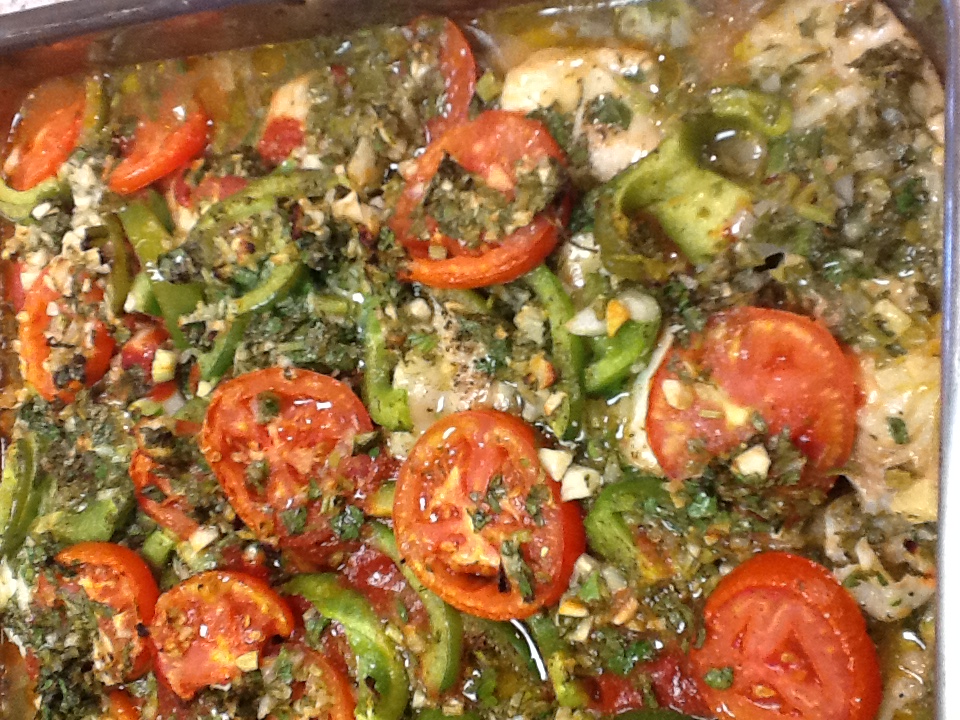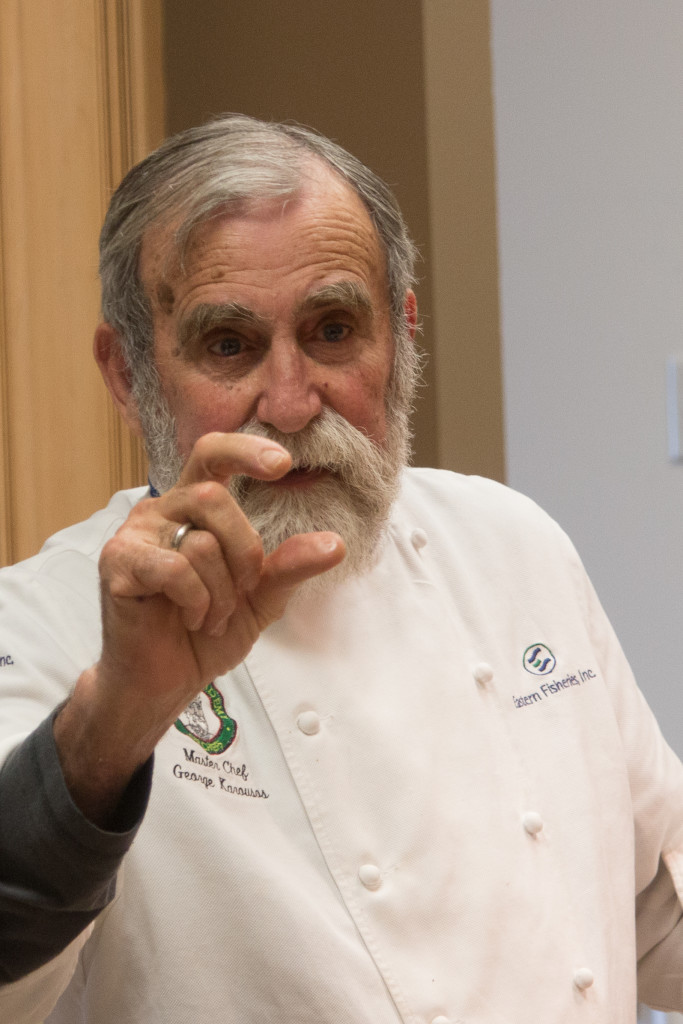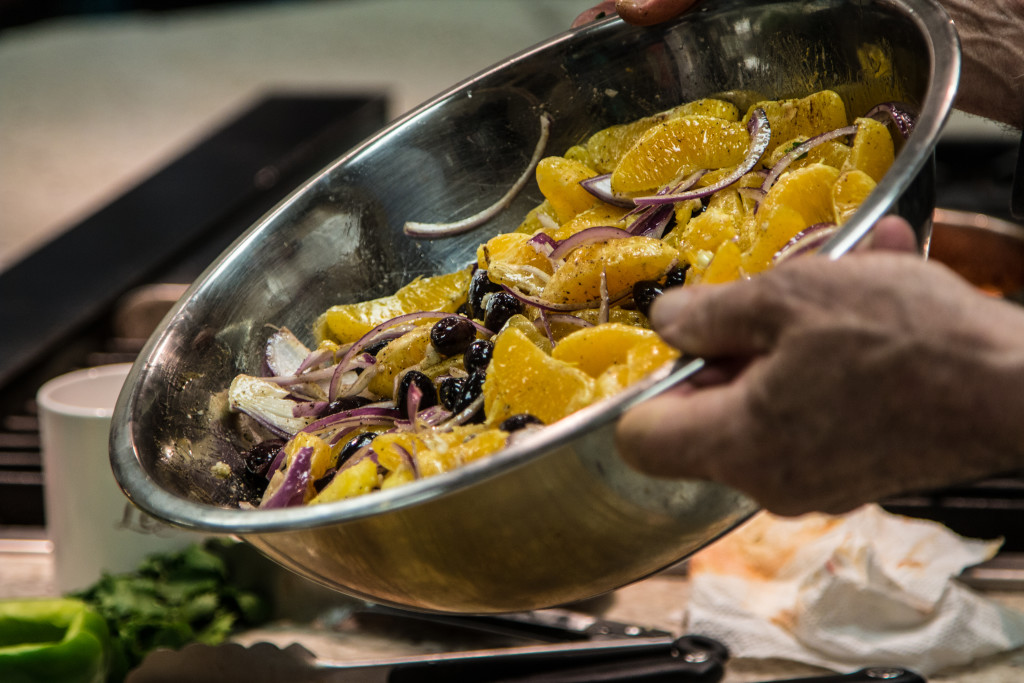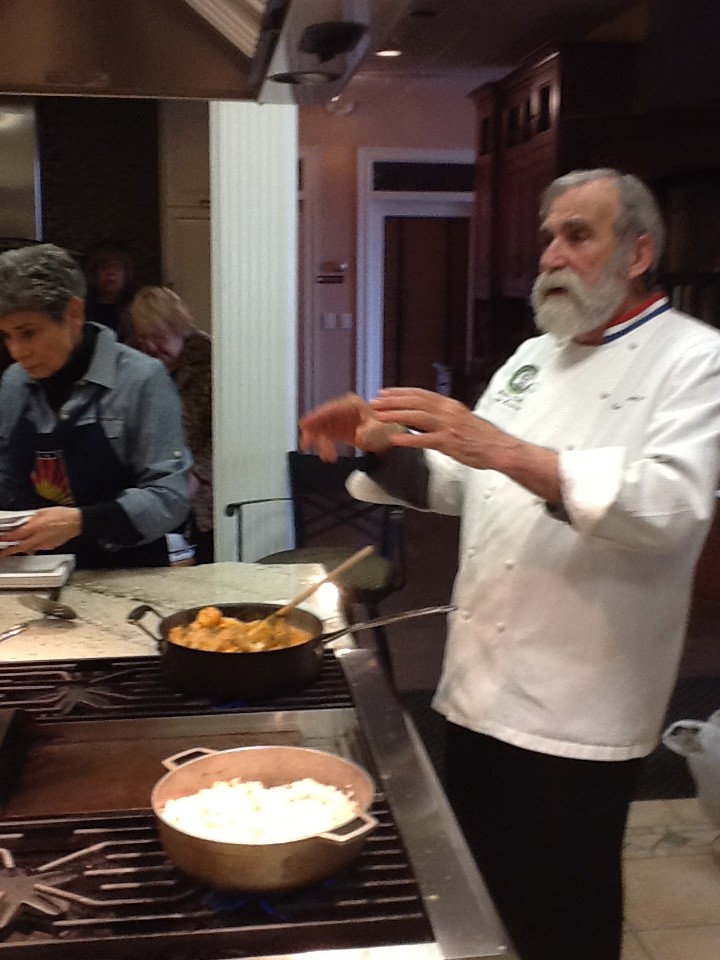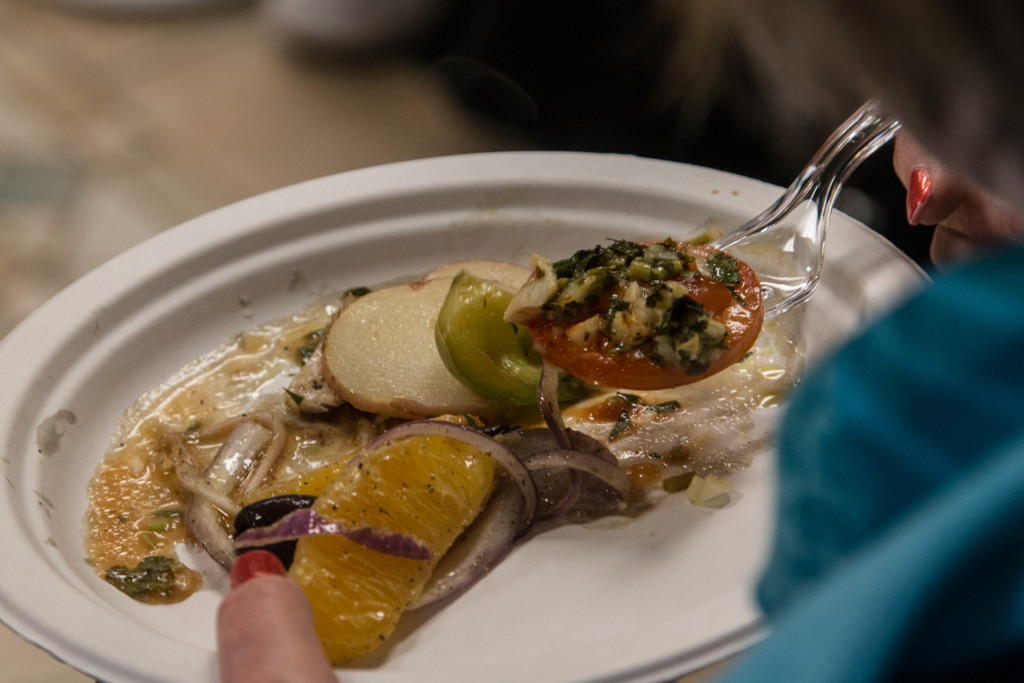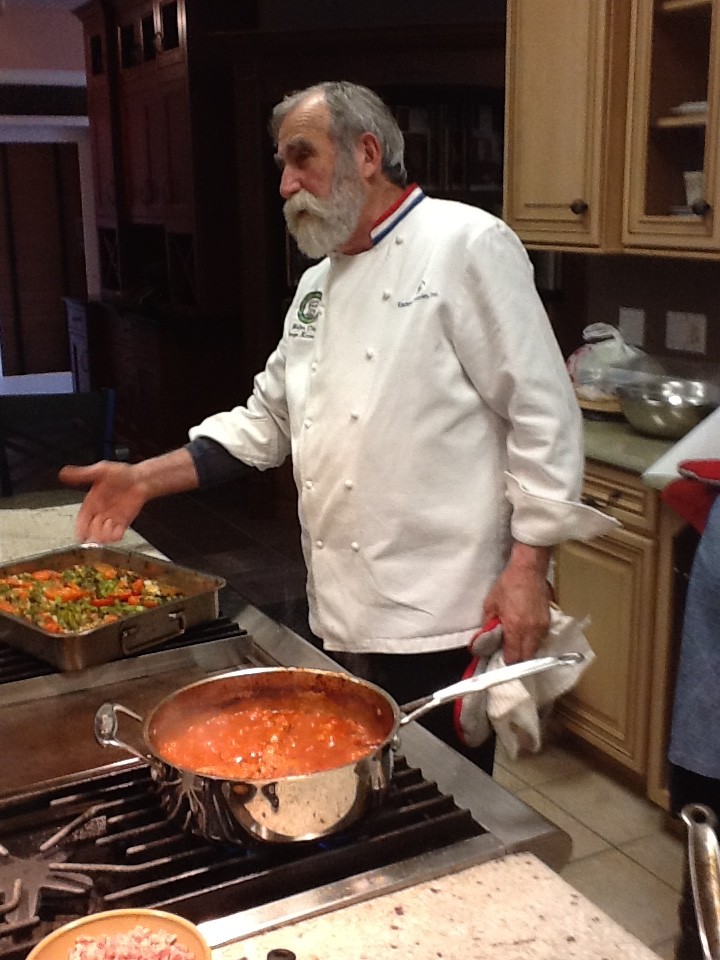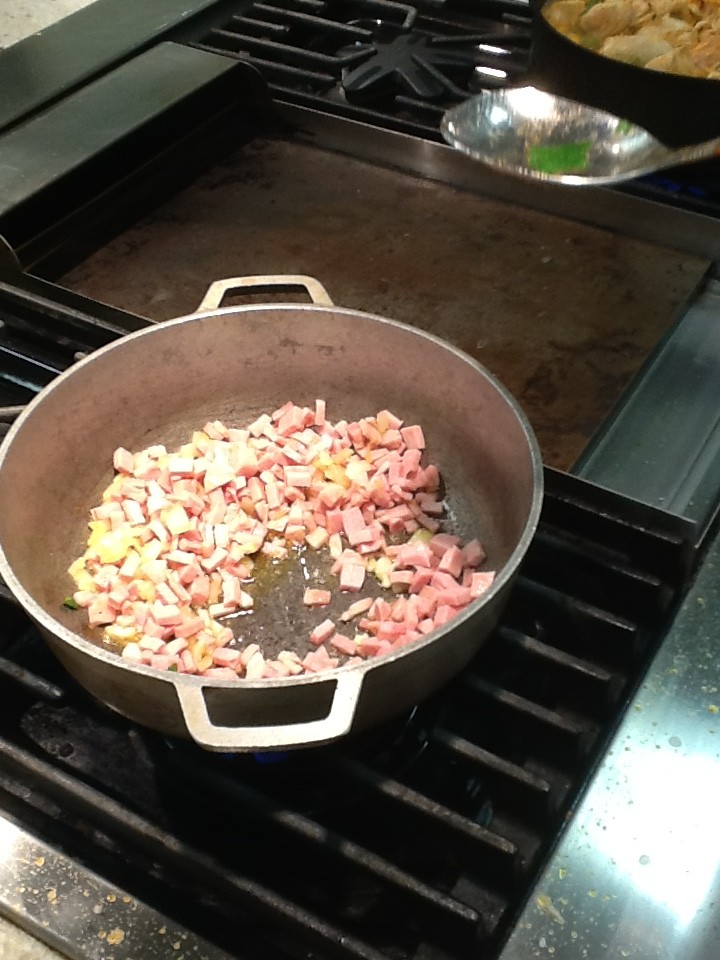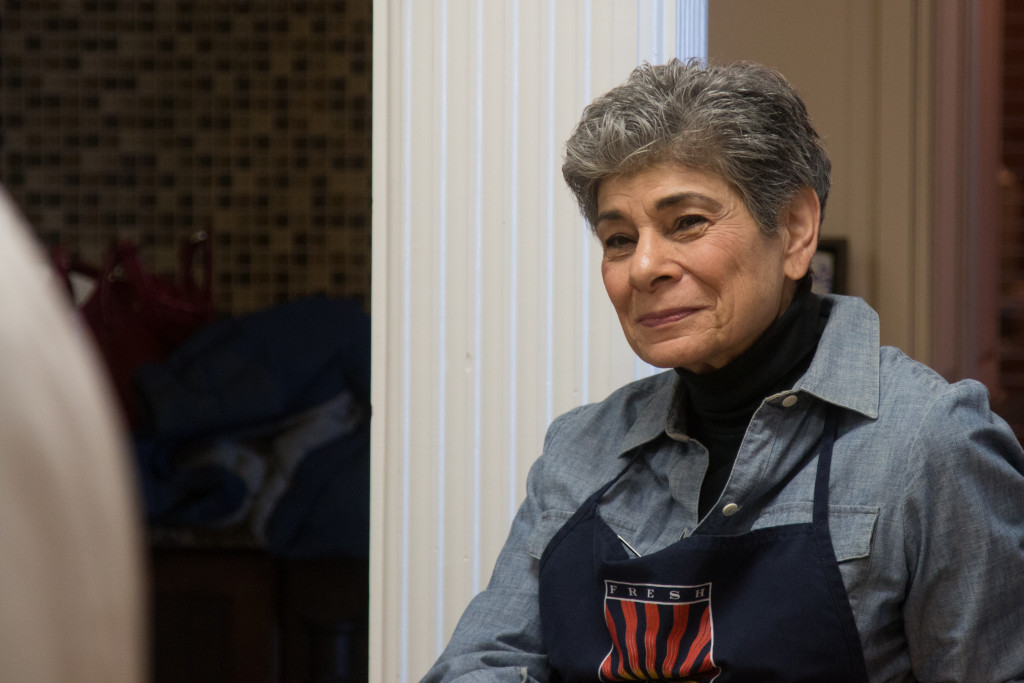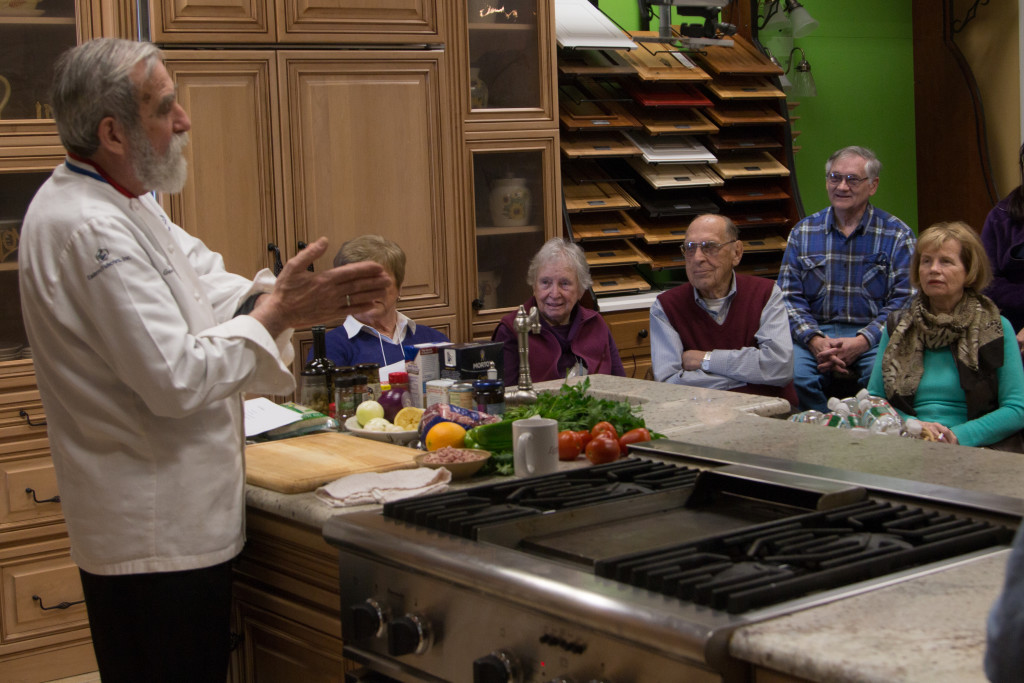
Master Chef George Karousos serves up cooking instructions with a little “dinner theater” as a side!
For Marge Ghilarducci cooking is an adventure .
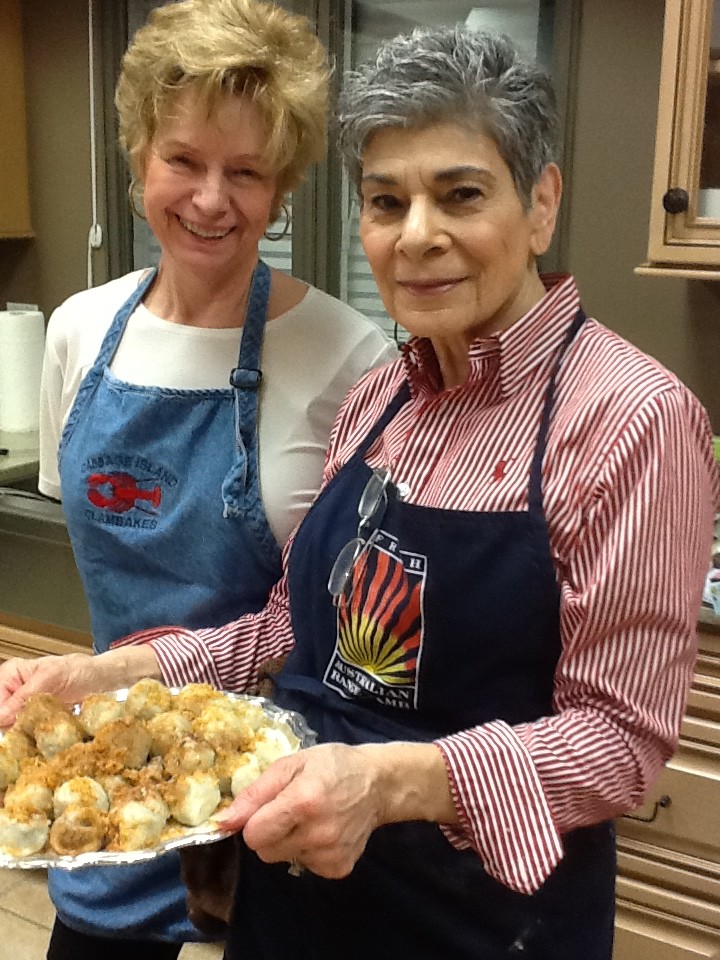
These pictures are from our class of last week with Marge cooking Czechoslovakian cuisine. Creamy Chicken Paprika with potato Dumplings. Desert pictured on the silver tray were plum dumplings. Not pictured was Bramboracka a Czech soup. Linda McCarthy was the sou chef for the meal. In other words she did the chopping just for that class.
“New recipes to me are like reading new books or writing poetry are to others,” she says. Marge and co-facilitator Marguerite Sheahan bring this spirit of adventure each week to the very popular Second Half study group, “Travel Europe One Meal at a Time.”
Marge started the study group and Marguerite began as a student in 2013. “I was so enthused during my first class that I started taking pictures of the process,” explains Marguerite, and that led to her co-facilitator role where she uses her iPad to capture wonderful pictures of the meal in progress. She then carries the pictures around the room, giving everyone a close-up view of exactly what culinary magic is taking place in front of them.
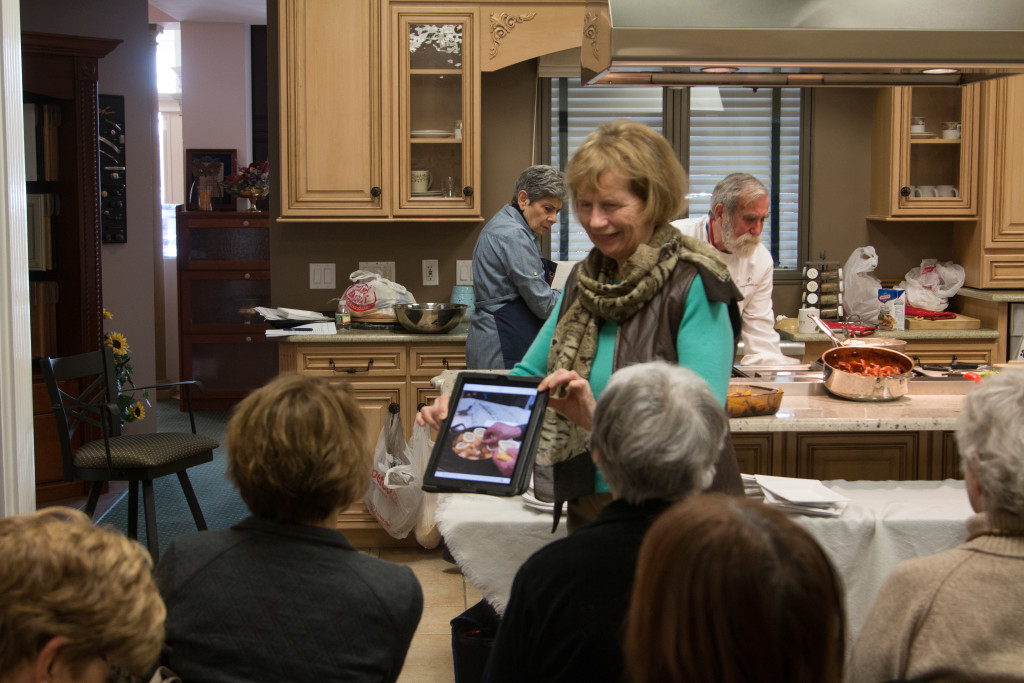
Marguerite Sheahan uses her iPad to show everyone in the room exactly what’s happening on the stove at the moment.
On the day I visited, Master Chef George Karousos, one of the top working chefs in the United States, was front and center demonstrating how to prepare—well, actually preparing and explaining at the same time—five dishes:
- Orange and Black Olive Salad, Moroccan style
- Tajin Bi’l-Hut Fish Stew
- Chicken Tanjine with Lemons and Olives
- Riz Pilaf
- Tas Kibab (Lamb)
Now if you think this is simply a series of lectures about cooking, step back and watch! These folks learn how to cook, watch something being cooked, sample each completed dish, and in the process enjoy a touch of theater. Then this is all followed up by printed recipes and Marguerite’s pictures of the preparation and final result, so at the end the participants have tasty memories, instructions, and a small cookbook. All the sounds, aromas, and tastes are theirs to experience and apply.
And apply they do. “I have already cooked the Chicken Tanjine with lemons and olives and my family raved about it,” Sandra Hart said after the first class this spring. “I enjoyed the class tremendously,” she added. “Watching Chef Karousos whip up three main courses, a salad, and a side dish was delightful, but I also enjoyed receiving printed recipes of the Moroccan meals as well as many cooking tips.”
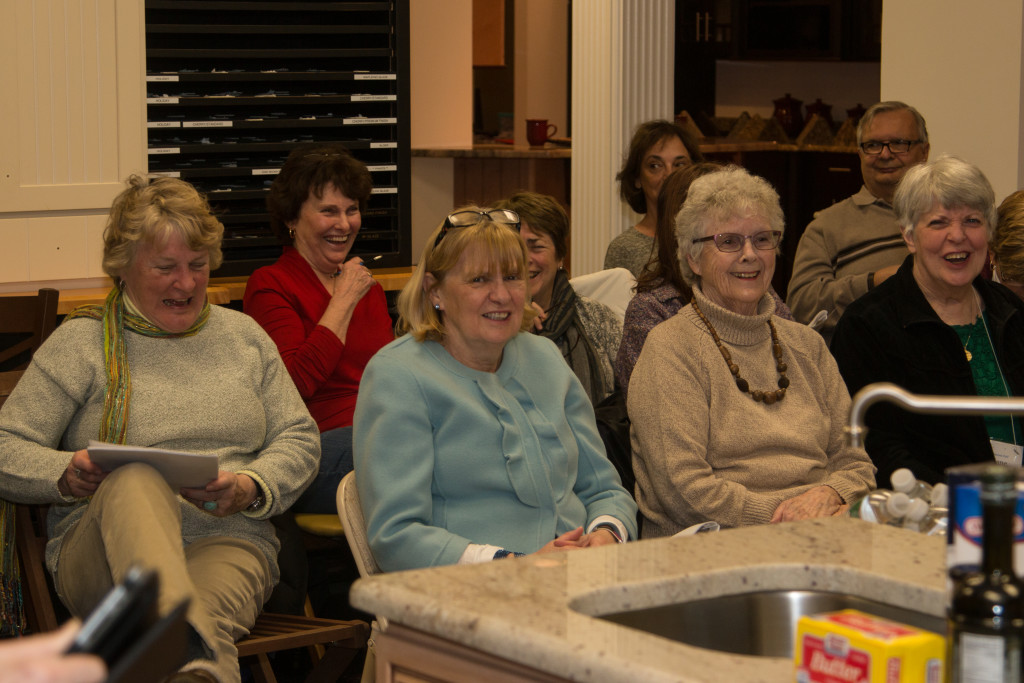 “I do love the enthusiasm of my students,” Marge adds. “I learned that they do enjoy learning new recipes, but mostly I have found that what they really like is ‘dinner theatre’ . . . to be entertained by the chefs and then to taste the amazing dishes that are produced in under two hours.”
“I do love the enthusiasm of my students,” Marge adds. “I learned that they do enjoy learning new recipes, but mostly I have found that what they really like is ‘dinner theatre’ . . . to be entertained by the chefs and then to taste the amazing dishes that are produced in under two hours.”
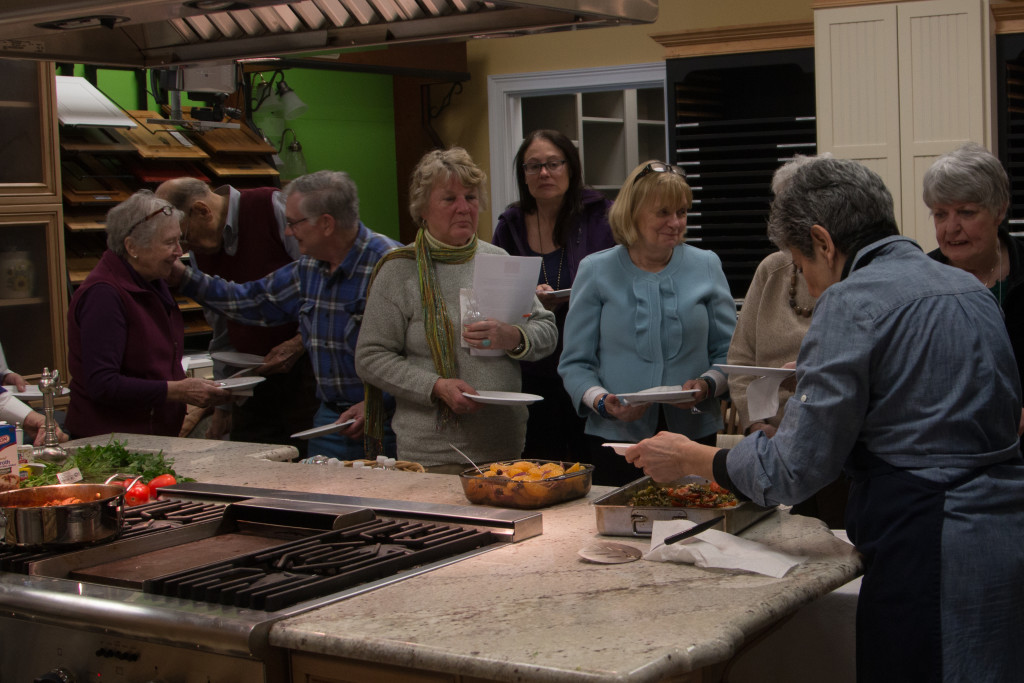 Master Chef George Karousos established a world-renowned reputation at the Sea Fare Inn in Portsmouth, RI. He apprenticed both in Europe and America, has received multiple awards, been a food columnist, editor, culinary archeologist, and professor.”
Master Chef George Karousos established a world-renowned reputation at the Sea Fare Inn in Portsmouth, RI. He apprenticed both in Europe and America, has received multiple awards, been a food columnist, editor, culinary archeologist, and professor.”
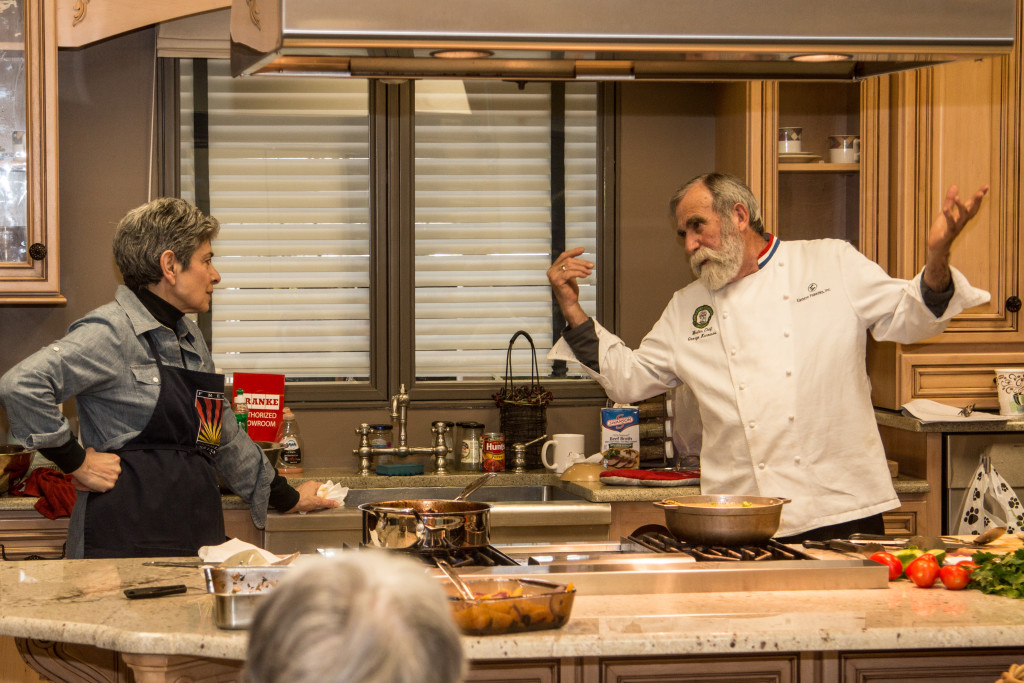 How do you find chefs of this quality willing to give their time? That’s one of the main challenges Marge faces.
How do you find chefs of this quality willing to give their time? That’s one of the main challenges Marge faces.
“I was very fortunate early on to discover Chef Mike Melo (M&C Cafe) and George Karousos. Carolyn Gloster from Somerset Berkley Regional High School and Chef Jay Mendes have also been loyal and dedicated,” she saids.
But “most chefs that I have attempted to add either are not interested or have commitments with their teaching schedules. Many chefs have been suggested and I have approached them, but there are more chefs with commitment issues – especially on a Tuesday afternoon – than those who are not only available but enjoy these types of experiences.”
The challenge for Marge doesn’t end there, though. When it actually comes to conducting the course, Marge is a great example of the kind of extra mile the volunteers leading Second Half study groups are willing to go to make the experience they provide special. “The hardest part of conducting a class – Marge is her own “guest chef” some times – is not in selecting the recipes or the groceries, but to bring every pot, pan, cooking tool and utensil to execute the recipes.”
“This aspect of cooking for the class has the same challenge for each chef, ” she explained, “Remembering can openers, spoons, potato peelers, etc. – the little incidentals that are vital and easily forgotten until the moment when they are needed.”
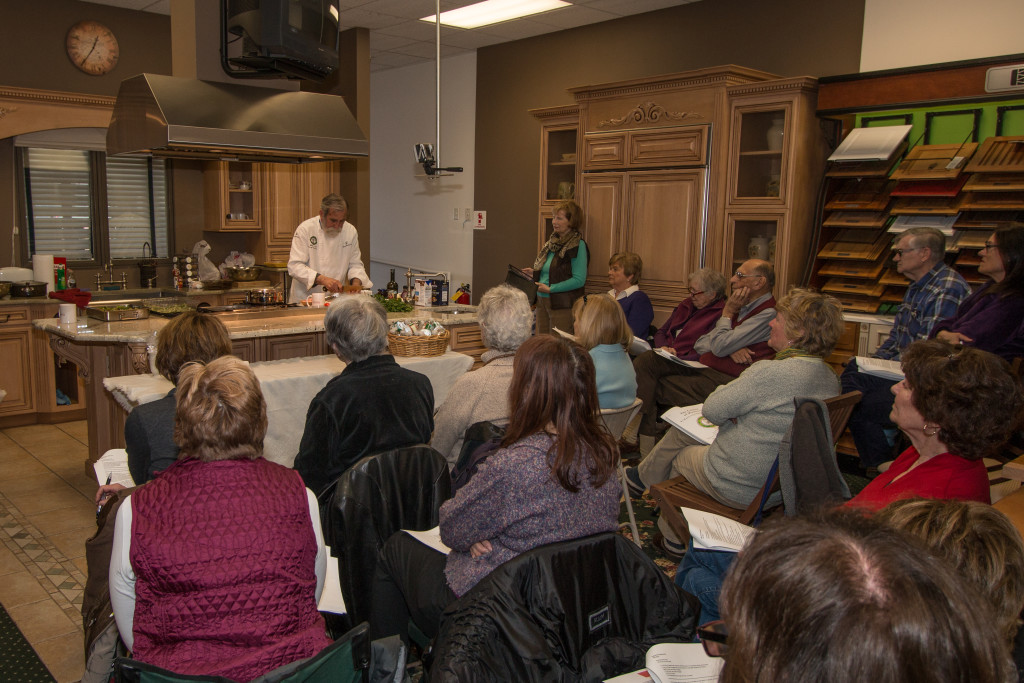 Where this all happens is at Dartmouth Building Supply’s kitchen on Route 6 in Dartmouth. “I am more than grateful to Dartmouth Building Supply for allowing us the use of their live kitchen,” she said, “but with the exception of the refrigerator, stove, and sink, we have to provide everything else.”
Where this all happens is at Dartmouth Building Supply’s kitchen on Route 6 in Dartmouth. “I am more than grateful to Dartmouth Building Supply for allowing us the use of their live kitchen,” she said, “but with the exception of the refrigerator, stove, and sink, we have to provide everything else.”
As for Marguerite, she sums up her main role in one succinct statement. “I love taking pictures!” The basic idea stems from long experience. “I was a nursing instructor in various programs for more than 40 years and one of my concerns was making sure that students could see what procedure was being demonstrated in the nursing lab so I would have them stand or move in closer so it just seemed natural to use my Ipad to accomplish the same goal in the cooking class.”
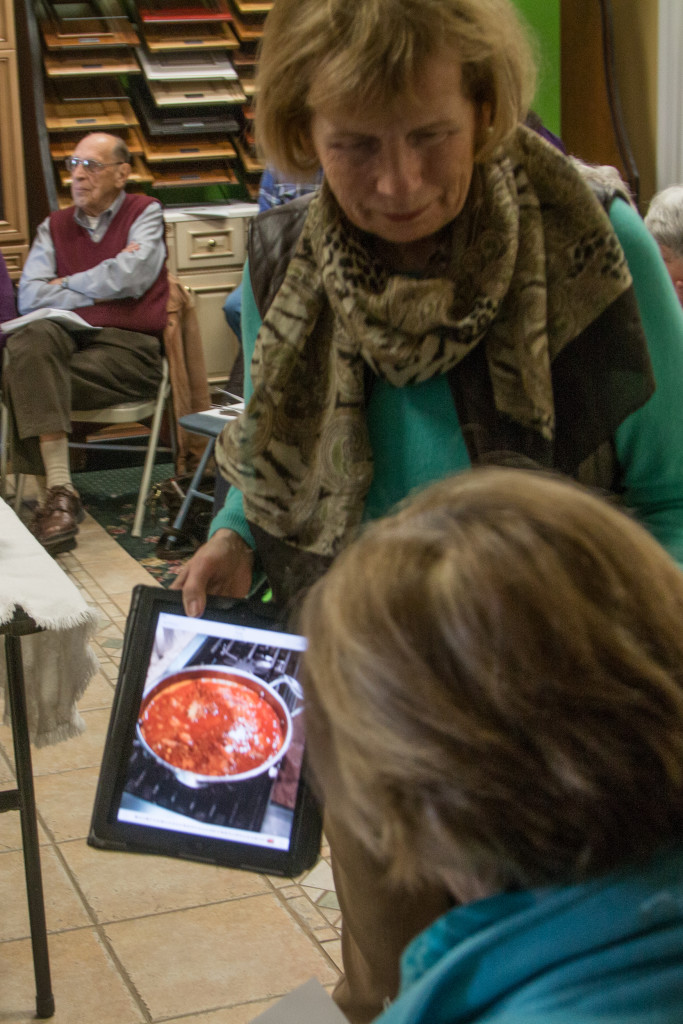 She also knows the value of the old adage about a picture being worth a thousand words. “I realized that with a group of this size many individuals could not see the inside of the cookware from where they sat, so I brought my iPad to take pictures and circulate them among the group.”
She also knows the value of the old adage about a picture being worth a thousand words. “I realized that with a group of this size many individuals could not see the inside of the cookware from where they sat, so I brought my iPad to take pictures and circulate them among the group.”
Marge then incorporates the pictures of the finished product when sending out the recipes to the class, and the “oh, so that is what it should look like” reaction proves the worth of the pictures.
There’s a modest $30 surcharge with this course to cover the food the chefs prepare and the students consume—seems like the best bargain in town for instruction, entertainment, and a sampling of six meals—a culinary adventure indeed! No wonder this study group is so popular!
